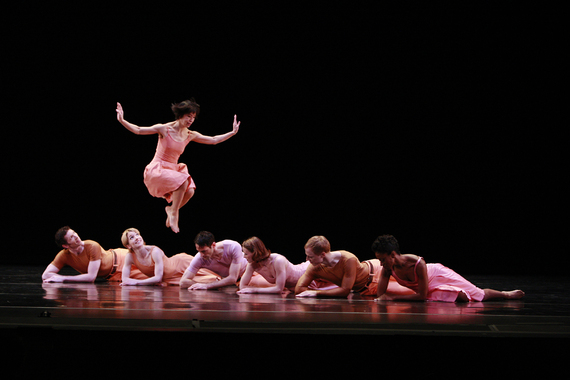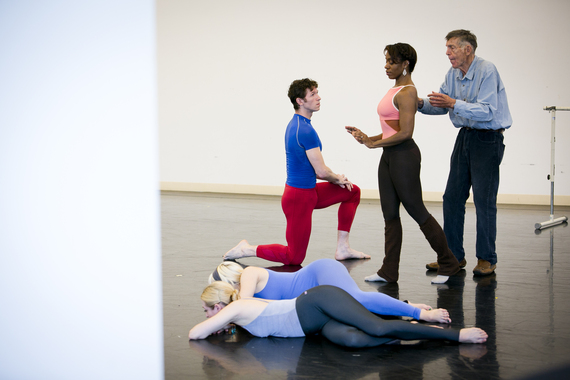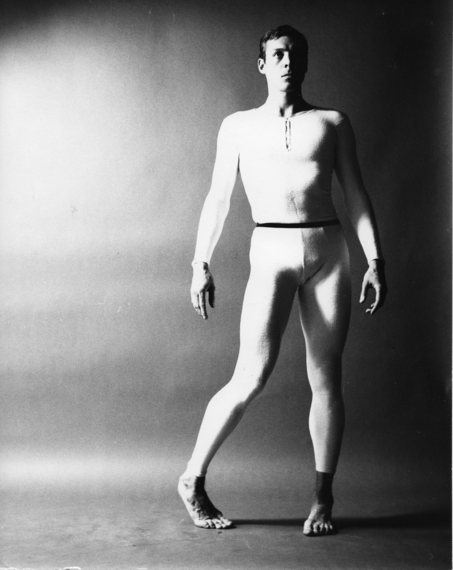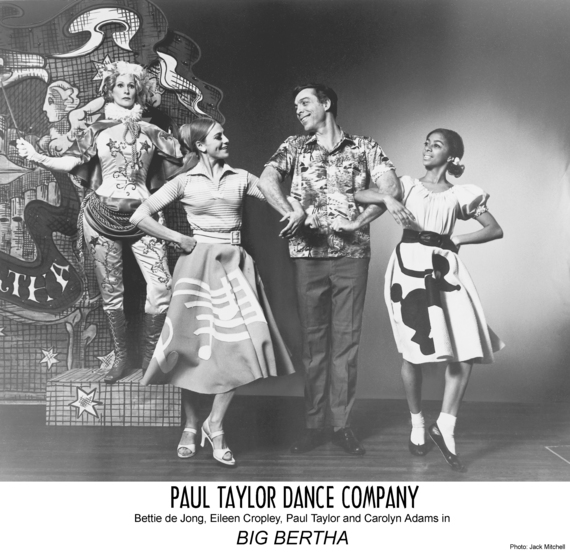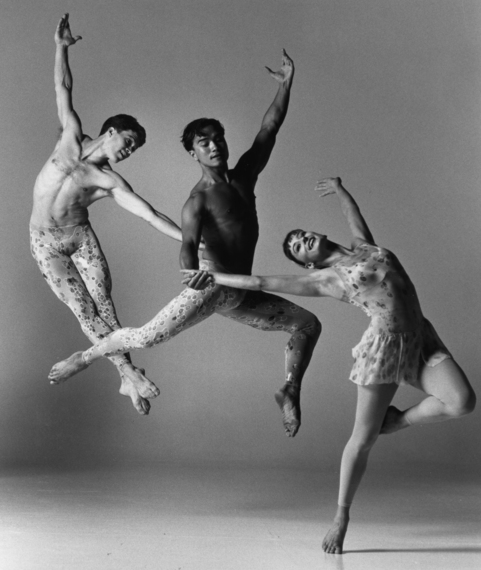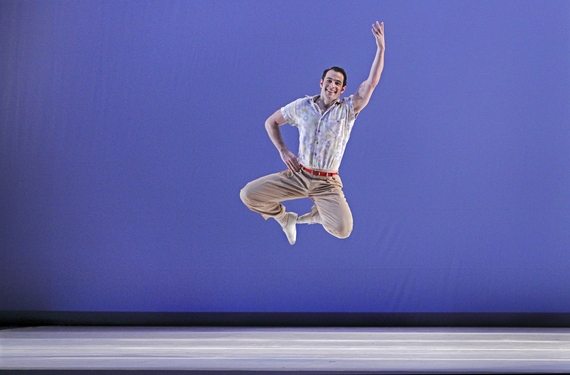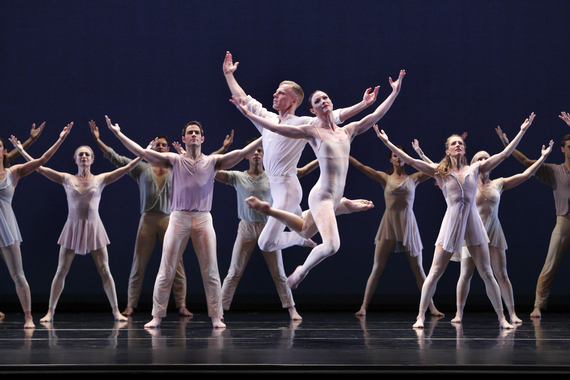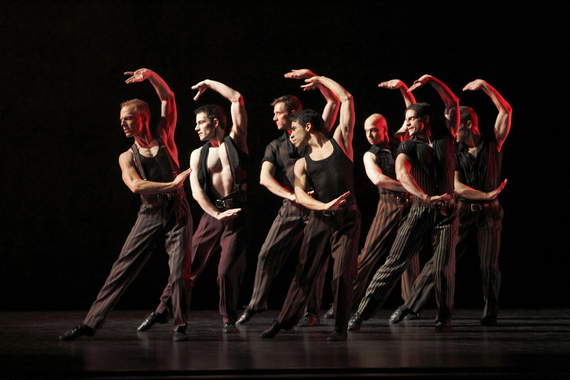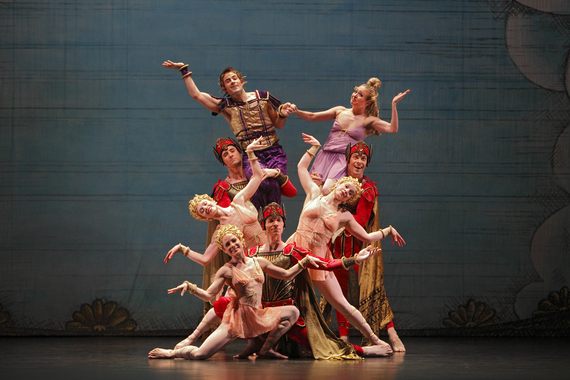What is the life of a painting? In an artist's hands, a previously anonymous canvas and a random assortment of paint suddenly becomes not only an expression of an idea, but a commodity that often lives beyond the artist himself. The work can be sold, displayed, auctioned, loaned, perhaps stolen, then perhaps recovered, re-sold, and so on -- almost indefinitely.
What is the life of a dance? A choreographer makes a work on a human body, sometimes a group of performers. At the perfect intersection of lights, costumes, and audience, the dance becomes a performance. When the show is over, the audience goes home, the dancers dissipate into the night, and the work of art is gone, existing only in the moment.
Therein lies the challenge every dance maker must eventually face: what happens to my work when I die?
I was invited to a rehearsal with the Paul Taylor Dance Company, still led 60 years later by Taylor himself, as they expand as Paul Taylor's American Modern Dance, a larger presenting umbrella organization for modern dance. At 83, Taylor still makes two dances a year, in addition to reviving some of his 142 works for their upcoming Lincoln Center season March 11 -- 29. Watching this last living member of the second generation of American modern dance makers, I was struck by the sheer amount of information that he has collected in his body throughout his lifetime. A dancer with the Martha Graham Dance Company, Taylor was also invited by George Balanchine as a guest artist with the New York City Ballet, continuing to make dances for his own Paul Taylor Dance Company that seek to be reflective of the times. In an attempt to secure his body of work while recognizing the contributions of his artistic colleagues, Paul Taylor has begun the very public process of ensuring that his work, his style and the dance world that he has known and loved has a sustainable plan for the future.
I had the unique opportunity to speak with both Jon Tomlinson, Taylor's Executive Director, and current dancer Laura Halzack, to better understand the impact of this new step towards institutional sustainability for American modern dance from both the artistic and business perspective. Their words reflect the great care towards ensuring Taylor's vision for the future of his work, while candidly revealing the human limits of this ephemeral art.
Embracing the Balanchine model
"Paul Taylor is the most pragmatic man I have ever met; it's all about making it work," Tomlinson says. "Paul Taylor looked at the industry around us to see who has succeeded and who has failed at creating an institution. The person that has clearly succeeded the most is George Balanchine. He left New York City Ballet with a guide and a future vision for the next generation. Paul and I had a very blunt conversation, and he presented to me a plan and an artistic vision of how he would like his work to go forward. I said, 'If we wait until you die to do this, we will spend a huge amount of our energy dismissing the nay-sayers. If you do this while you are alive, no one gets to say this is not what he wants.' All the energy of the institution, the staff, the dancers, the board, we get to embrace this vision and make sure that it's a success. We think we are embracing the Balanchine model: tonight you could go uptown to New York City Ballet and see mostly Balanchine, but then also a couple of other choreographers. The company's core is the Balanchine repertoire, which is probably the most magnificent ballet repertory gathered in one place, and then a bunch of other stuff that builds on that to say: this is what ballet can be. We want to do the same thing with Paul Taylor; we have a repertory of modern dance that is second to none, we think that is a strong core to go forward with and build upon."
"We have a very strong partnership with New York City Ballet, and in particular with Peter Martins, who has been incredibly supportive of this process. Peter is a huge supporter of modern dance, and he even admits it: 'I'm a ballet man! Why do I care about modern dance? But I do! I worry about all of the great artists in my lifetime vanishing and dying, the artform is going to die along with it.' Peter met Paul very early on in the conversation, he asked Paul a lot of very specific questions like, Would you be okay with the spotlight going off of you and going onto dance? It's going from Paul Taylor to Modern Dance, are you going to be okay with that? Paul said absolutely. Paul is very funny, he has always said that he hates the spotlight. He just likes to make his dances and be left alone."
"The idea at Lincoln Center is that New York City Ballet finally has the dance theater they always wanted. The vision can include multiple seasons of American ballet and modern dance, invited companies, and full festival programming. Peter Martins has that mapped out, and he wants it to become the greatest dance theater in America and one of the great dance theaters of the world. That's his singular vision, and I think that will be his legacy. We have contracts with the Koch Theater for the next six years, and deal memos for the next ten years. Our goal is to make modern dance the last great art form that Lincoln Center recognizes."
Mr. Taylor plans to leave his works to the Paul Taylor Dance Foundation, ensuring that future seasons of Paul Taylor's American Modern Dance will include a core Taylor repertory. Each season will be supplemented with new contemporary commissions, revivals of orphaned masterworks (Tomlinson hinted at the potential future acquisition of some Cunningham repertory) and works by other modern dance masters, as well as shared programming with other modern dance institutions.
Embracing Taylor's Humanity
"With Paul Taylor's American Modern Dance, we are representing the past, present, and future of modern dance," says Taylor Dancer Laura Halzack, currently in her ninth season with the company. "We are still Paul Taylor's dance company. When we go on the road, we are the Paul Taylor Dance Company. But when we perform in New York, Paul Taylor's American Modern Dance is the initiative. The company is still the focus of it, but it is meant to be shared. This year, we have the Limon company doing Doris Humphrey's great work 'Passacaglia' and we also have Shen Wei's 'Rite of Spring.' It gives modern and contemporary dance a much larger platform -- not just for our company -- it's a way to present the entire art form to a larger audience. It's inspiring that Paul wants the past to be preserved, but its also inspiring and thrilling that he is also thinking towards the future of the art form and the company. It gives us a lot of confidence to be dancers here. There's a super positive charge around, and it's awesome to know that your boss really behind it."
"There are a lot of things that haven't changed, but things are evolving. This year is presenting the greatest change for the company in a long time. You see a lot of dancers come and go, you work with such mature artists when you first start out and you are learning from them, and then it's almost like you wake up one morning, and there's that kid tapping you on the shoulder, and now you're that person who is the purveyor of information. It's still such an oral tradition here. We have our videos and we obviously have Paul and Bettie [de Jong, Taylor's rehearsal director and right arm for the past 35 years] giving us notes. We all give information to one another."
"When I started with the company, I was so focused on learning the shapes. I was so fortunate to have Paul create on me very early on in my career. What he honed in on me was something that was very personal, an essence, and he helped me be able to share that essence with other people. He will give you the challenge, and then step back and let you find it. A lot of times no news is good news. He likes to see you blossom."
"I want people to remember the humanity of Paul's work. As an essence, each dance has its own life, certain dances have their own vocabulary. But there is something essentially human about all of his works, and essentially individual. That's one of the greatest things about being one of his dancers. The further into the future when work gets away from a choreographer, it's my hope to share that sense of humanity. If things get too codified, the work can lose its life, and that's easy to do without someone at the helm. It can become too technical, but Paul always said, my work isn't a technique, my work is a style. He's always allowed each individual dancer to inhabit his style in the way that their bodies inhabit it. That's what makes his work so beautiful. You wouldn't have the same effect with a piece like "Esplanade" without all of the different personalities. The spatial patterns are amazing, but what he does is encourage dancers to be themselves. That is part of the success of his works and what I want to pass on."

